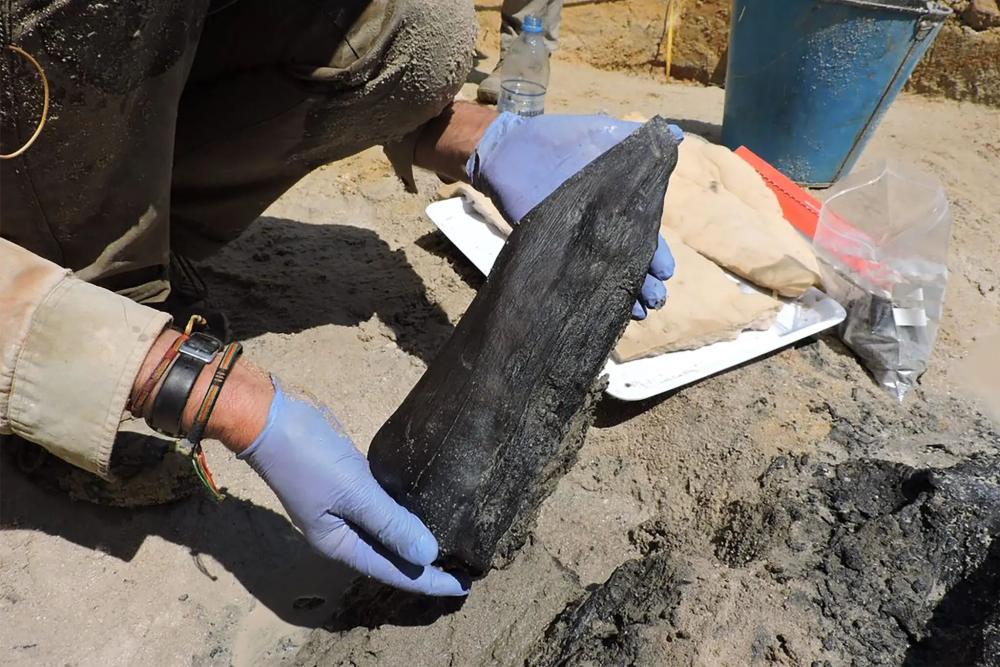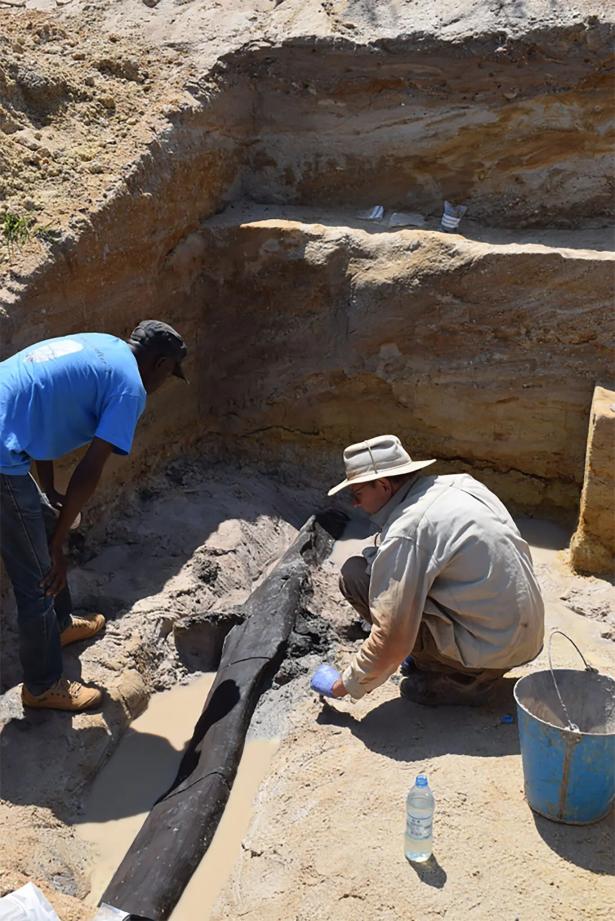Nearly half a million years ago, humans in Africa were assembling wood into large structures, according to a study published Wednesday that describes notched and tapered logs buried under sand in Zambia.
The discovery drastically pushes back the historical record of structural woodworking. Before, the oldest known examples of this craft were 9,000-year-old platforms on the edge of a British lake.
Ancient wood products are extremely rare because the organic material typically degrades over thousands of years, said Annemieke Milks, an archaeologist at the University of Reading who was not involved in the new study, which appeared in the journal Nature. “It almost never preserves,” she said.
It’s not clear what early humans were building in Africa. Dr. Milks said that the new discovery suggested that they used wood not just for spears or digging sticks, but also for far more ambitious creations such as platforms or walkways.
“I think most early human groups would have been using wood in some form,” she said. “We just don’t see it.”
The logs were discovered by an international team of scientists in 2019 near an enormous waterfall in Zambia known as the Kalambo Falls. There, the Kalambo River drops 770 feet before flowing into Lake Tanganyika.
For archaeologists, the site has a checkered history. In the 1950s, a British archaeologist, Desmond Clark, found ancient stone tools near the falls, as well as pieces of wood that he proposed had been digging sticks and spears. Other pieces looked as if they had been burned; it would have been some of the oldest evidence of people making fires.

Kalambo Falls, where the wood artifacts were found. Credit...Geoff Duller/Aberystwyth University
By the early 2000s, however, much of the luster of Dr. Clark’s discovery had disappeared. For one thing, he never got a firm fix on the age of the wood. The only reliable method available at the time to determine age was radiocarbon dating, which can be used only on objects less than 50,000 years old. The wood pieces at Kalambo Falls proved to be older than that — but how much older?
Other researchers questioned whether people had actually crafted the wooden objects. Dr. Clark acknowledged that they might have been branches that had fallen into the Kalambo River and were reshaped by sand grains carried in the water flowing toward the falls.
In 2006, Lawrence Barham, an archaeologist at the University of Liverpool, and his colleagues returned to the Kalambo Falls. By then, researchers had developed a new way to determine the age of archaeological sites, taking advantage of how quartz grains can act like geological clocks. As naturally occurring uranium atoms break down in the ground, they release energy that gets trapped inside the quartz. Over time, the grains store more and more energy, which scientists can later measure in their labs. The more energy, the older the specimen.
On their trip to the Kalambo Falls in 2006, the scientists found more stone tools. Geoff Duller, a geophysicist at Aberystwyth University in Wales, collected sand from the riverbanks, and spent the next few years measuring its trapped energy. He determined that the oldest layers of sediment that contained stone tools were 300,000 to 500,000 years old.
That meant the tools were made well before the evolution of modern humans. The scientists suspect they might have been made by an earlier species present in Zambia, known as Homo heidelbergensis.
The researchers made another trip to the falls, in 2019, and Dr. Duller had planned to use an even more powerful dating technique based on feldspar grains rather than quartz.
But when they arrived at Dr. Clark’s old site, they discovered it had vanished. In the 13 years since their last trip, the river had shifted away. All that was left was a reed-filled marsh.
Fortunately, Dr. Barham had prepared a Plan B. Before the expedition, he used Google Earth to spot a promising strip of beach along the Kalambo River. When they got there, Dr. Barham immediately saw a stick jutting out of the sand. In the water, he found a sharpened tip that fit perfectly on one end of the stick. If he had come a year later, the fragments might have washed away. “It was just a moment of luck,” Dr. Barham said.
In the same area, the researchers found stone tools along with wood shaped into wedges and V’s — clear signs of handiwork.
Dr. Duller used the feldspar grains to determine the age of the artifacts. He found that the objects came from three distinct ages: 487,000 years ago, 390,000 years and 324,000 years. It’s possible that people lived by the river throughout that time or returned to it over thousands of generations.

A flint found at the site used to shape the wooden structure. Credit: Larry Barham/University of Liverpool
At the end of the field season in 2019, the researchers made their most spectacular discovery. In the oldest layer of sand, they uncovered a four-and-a-half-foot log of a small African tree known as Zeyher’s bushwillow. Near the log’s tapered end, the researchers noticed a large notch. When they dug farther down, they realized the notched part of the log was resting on an even bigger tree trunk.
As the researchers exposed the wood, they took high-resolution photographs. The pictures revealed chop marks on the log and the trunk, suggesting that people had worked them with axes and scraping tools. “This is deliberate,” Dr. Barham said. “This is intentional.”
Dr. Milks said taking photographs of the ancient wooden objects as soon as they were discovered was crucial for understanding how they were crafted. The waterlogged sand allowed the wood to survive for hundreds of thousands of years almost unchanged. But when ancient wood is exposed to the air again, it can lose essential clues in a matter of minutes. “It can shrink, it can warp — all sorts of things can happen,” Dr. Milks said.
Dr. Barham and his colleagues collaborated with John Mukopa, a traditional Zambian woodworker, to interpret their findings. They suspect that people cut down live trees with stone axes. They then worked the wood so that the two pieces could fit together into some larger structure.
Dr. Barham speculated that the log and the trunk were part of a structure built above the marshy land along the Kalambo River. “It’s about keeping your feet dry, or keeping your food dry, or keeping your firewood dry,” he said.
“Put yourself in the mind of somebody living there almost 480,000 years ago with a big brain,” he said. “Don’t be frightened of complex suggestions.”
Carl Zimmer writes the “Origins” column for The New York Times. He is the author of fourteen books, including “Life's Edge: The Search For What It Means To Be Alive.”
Subscribe to The New York Times

The Sneaky Force Behind Our Sun’s Violent Outbursts
A strange discovery from flying close to the sun.
Paul M. Sutter
Nautilus


Spread the word